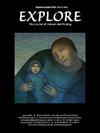Evaluating the relevance of Bawl Ghusālī in the diagnosis of Ḍu‘f al-Kabid (hepatic insufficiency): A case-based correlation between unani medicine and modern pathology
IF 1.9
4区 医学
Q3 INTEGRATIVE & COMPLEMENTARY MEDICINE
引用次数: 0
Abstract
Background
Ḍu‘f al-Kabid (hepatic insufficiency) is a condition extensively described in classical Unani medicine, where impaired hepatic function arises due to structural or temperamental changes in the liver. One of the classical diagnostic markers of this condition is Bawl Ghusālī, a distinctive urinary appearance resembling the washings of raw meat, attributed to a failure of the liver’s discriminative faculty (Quwwat Mumaiyyaza). While traditional Unani texts emphasize this sign, its correlation with modern hepatic pathology remains underexplored in clinical literature.
Case Presentation
We report two cases of adult male patients with a history of chronic alcohol use who presented to the National Institute of Unani Medicine, Bangalore, with classical symptoms of hepatic insufficiency, including jaundice, anorexia, and right upper quadrant abdominal pain. Both patients exhibited dark-coloured urine without haematuria, corresponding to the Unani description of Bawl Ghusālī. Diagnostic evaluations revealed significantly elevated serum bilirubin, abnormal liver function tests, and ultrasound findings consistent with chronic liver parenchymal disease.
Discussion
These cases underscore a notable convergence between traditional Unani clinical observation and modern hepatological diagnostics. The description of Bawl Ghusālī may reflect underlying conjugated hyperbilirubinemia or urobilinogen excess, highlighting the relevance of traditional urine analysis in identifying hepatic dysfunction. The failure of Quwwat Mumaiyyaza, as described in Unani pathology, aligns conceptually with impaired hepatic clearance and altered bile metabolism seen in hepatic insufficiency.
Conclusion
The classical sign of Bawl Ghusālī remains a valuable diagnostic indicator within the Unani framework and may offer clinically meaningful insights even in contemporary medical practice. These cases advocate for the integration of traditional diagnostic principles into modern hepatology, particularly in resource-limited settings, and encourage further interdisciplinary research to validate such correlations.
评估Bawl Ghusālī在Ḍu 'f al-Kabid(肝功能不全)诊断中的相关性:基于病例的unani医学与现代病理学之间的相关性
BackgroundḌu 'f al-Kabid(肝功能不全)是经典乌纳尼医学中广泛描述的一种疾病,由于肝脏的结构或脾气变化而引起肝功能受损。这种疾病的经典诊断标志之一是Bawl Ghusālī,一种独特的尿液外观,类似生肉的洗涤,归因于肝脏辨别能力的失败(Quwwat Mumaiyyaza)。虽然传统的Unani文本强调这一迹象,但其与现代肝脏病理的相关性在临床文献中仍未得到充分探讨。我们报告了两例有慢性酒精使用史的成年男性患者,他们在班加罗尔国立Unani医学研究所就诊,伴有典型的肝功能不全症状,包括黄疸、厌食症和右上腹部疼痛。两名患者均表现出深色尿液,无血尿,符合Unani对Bawl的描述Ghusālī。诊断评估显示血清胆红素显著升高,肝功能检查异常,超声检查结果与慢性肝实质疾病一致。这些病例强调了传统的Unani临床观察和现代肝病诊断之间的显著融合。Bawl Ghusālī的描述可能反映了潜在的共轭高胆红素血症或尿胆红素原过量,强调了传统尿液分析在识别肝功能障碍中的相关性。如Unani病理学所述,Quwwat Mumaiyyaza的失败在概念上与肝功能不全中出现的肝清除受损和胆汁代谢改变相一致。结论Bawl的经典征象Ghusālī在Unani框架下仍然是一个有价值的诊断指标,即使在当代医学实践中也可能提供临床有意义的见解。这些病例提倡将传统诊断原则纳入现代肝病学,特别是在资源有限的情况下,并鼓励进一步的跨学科研究以验证这种相关性。
本文章由计算机程序翻译,如有差异,请以英文原文为准。
求助全文
约1分钟内获得全文
求助全文
来源期刊

Explore-The Journal of Science and Healing
医学-全科医学与补充医学
CiteScore
3.00
自引率
8.30%
发文量
179
审稿时长
25 days
期刊介绍:
EXPLORE: The Journal of Science & Healing addresses the scientific principles behind, and applications of, evidence-based healing practices from a wide variety of sources, including conventional, alternative, and cross-cultural medicine. It is an interdisciplinary journal that explores the healing arts, consciousness, spirituality, eco-environmental issues, and basic science as all these fields relate to health.
 求助内容:
求助内容: 应助结果提醒方式:
应助结果提醒方式:


